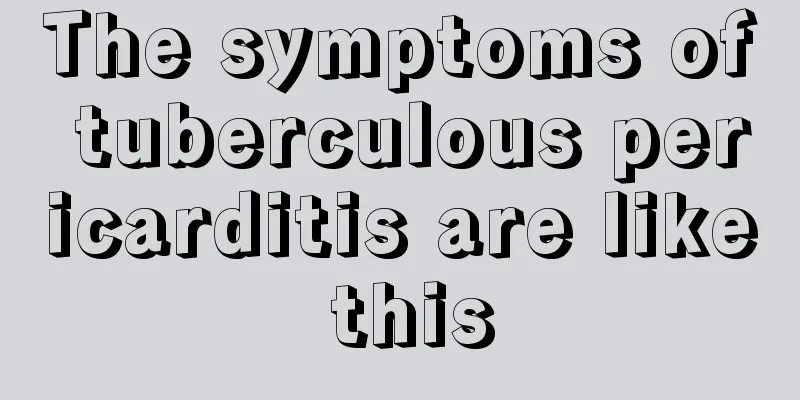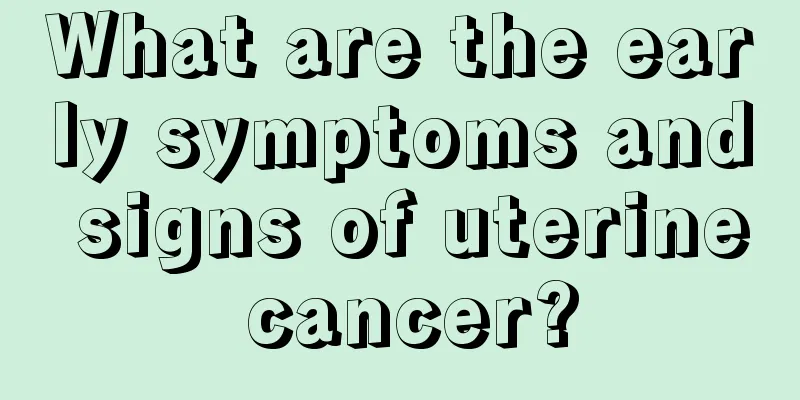The symptoms of tuberculous pericarditis are like this

|
Although tuberculous pericarditis is relatively rare in daily life, it is a real disease that often occurs in school-age children. It has a huge impact on children's health and development. Therefore, it is particularly important for parents to understand the symptoms of tuberculous pericarditis and to achieve early detection and early treatment. Tuberculous pericarditis has become uncommon in recent years and is more common in school-age children. Tuberculous pericarditis can be divided into two types: exudative and constrictive. Exudative pericarditis often occurs after the initial infection, while constrictive cases mostly evolve from exudative pericarditis. According to an analysis of 42 cases of tuberculous pericarditis at Beijing Children's Hospital, 71.4% were exudative and 28.6% were constrictive. [Pathological changes] Tuberculous pericarditis is caused by intrathoracic lymph node tuberculosis, pleural or peritoneal tuberculosis, which is transmitted through lymph reflux or directly spread. The most common sources are the tracheal crossing lymph nodes near the pericardium, the aortic arch lymph nodes and the ductus arteriosus lymph nodes. Secondly, it may also be spread by hematogenous spread. When systemic miliary tuberculosis occurs, tuberculous nodules may be present in the pericardium, but this is less common. In addition, the caseous liquefied tuberculous lymph nodes near the pericardium may rupture directly into the pericardial cavity. Exudative pericarditis is often part of systemic polyserositis. Varying amounts of serous fibrinous exudate accumulate in the pericardial cavity, scattered miliary tuberculosis lesions or caseous changes can be seen on the surface of the pericardium, and the pericardium is swollen, covered with fibrin and loses its luster. When the disease progresses smoothly, the pericardium can completely return to normal after the exudate and cellulose are absorbed. If the exudate is absorbed and the cellulose is organized, the connective tissue proliferates, and the pericardium thickens and becomes extensively adhered, it may cause obstruction of the pericardial cavity and even adhesion of the pericardium to the pleura and chest wall, which is clinically called constrictive pericarditis or Pic's disease. The degree of pericardial thickening varies and can reach up to 2 cm in severe cases. Occasionally, pericardial calcification is seen. 【Clinical manifestations】 1. The onset of exudative tuberculous pericarditis can be acute or slow. Among the 30 cases of exudative pericarditis, the shortest time from onset to hospitalization was 7 days and the longest was 1 year. Most of them have symptoms of systemic poisoning such as fever, loss of appetite, and weakness. The main early symptom is pain, which is mostly located under the sternum. It can be sharp pain, dull pain or tightness in the chest. Sometimes the pain radiates to the neck, shoulders, arms and upper abdomen, and is aggravated by inhalation, coughing or chest movement. As the exudate accumulates, the pain may decrease or disappear. Large amounts of pericardial effusion may cause symptoms of cardiac compression, such as dyspnea, dry cough, nausea, hoarseness, and lower limb edema. Physical signs include moderate or above heart enlargement, weakened apex beat, distant heart sounds, gallop rhythm, enlarged liver, ascites, lower limb edema, distended jugular veins, pulsus paradoxus, decreased pulse pressure, dilation of the jugular vein during inspiration, and a positive hepatojugular reflux sign. As pericardial effusion compresses the left lung base, signs of pulmonary consolidation such as dullness and bronchial breath sounds may appear in the left lower back. However, when the onset is slow, the exudate is small, or the exudate is large but accumulates very slowly, there may be no obvious symptoms of cardiac tamponade. In about half of the children, pericardial friction sound can be heard in the early stages of inflammation. Examination showed significantly elevated venous pressure. 2. Constrictive pericarditis has a slow onset and may be caused by the persistence of the acute exudative type. However, most cases are not discovered due to their hidden acute stage, and have become constrictive when they seek medical treatment. The time it takes to develop constrictive pericarditis can range from months to years. The youngest of our 12 cases was a 2-year-old child. Surgery confirmed that, in addition to the general symptoms, the main clinical symptoms were dyspnea and a series of symptoms and signs of cardiac tamponade. The main symptom is hepatomegaly, followed by ascites, lower limb edema, jugular vein distension, rales at the lung bases and cyanosis of the lips. Cardiovascular signs include weakened apex beat, reduced heart sounds, no increase in the size of cardiac dullness, decreased pulse pressure, pulsus paradoxus, and increased venous pressure. |
<<: There are actually four symptoms of hepatobiliary stones
>>: How to treat conjunctival stones? It turns out to be like this
Recommend
Why is the number of small round epithelial cells high?
Epithelial cells are small round cells that make ...
How to treat carbuncle
Carbuncle is a disease caused by wound infection....
Can glycerin be used on the face?
Beauty enthusiasts in general usually pay attenti...
How to eat passion fruit
Passion fruits are in season in July and August, ...
What will happen if kidney stones are not treated
Patients with kidney stones certainly cannot igno...
There is an odor under my armpits
In the summer, people sweat easily because the we...
Why do I feel weak and sore all over?
There may be many reasons for general weakness an...
How can we better prevent melanoma in daily life?
Melanoma is a type of skin disease. Many people t...
What Chinese patent medicine should I take for nasopharyngeal carcinoma
What Chinese patent medicine should I take for na...
What to do if anal prolapse occurs? You need to know these methods
Anal prolapse is not a simple rectal prolapse. Th...
How long does it take to stop taking medication after osteosarcoma
Osteosarcoma is a malignant tumor disease. If you...
What are the benefits and harms of eating garlic
Garlic is called differently in different parts o...
How long is the breastfeeding period for a child?
The question of how long to breastfeed a baby has...
In the early stage of nasopharyngeal carcinoma, there will be symptoms of swollen lymph nodes in the neck
Nasopharyngeal carcinoma is a malignant tumor tha...
During the traditional festival, what are the requirements for the New Year’s Eve dinner?
Chinese traditional culture has a long history, a...









